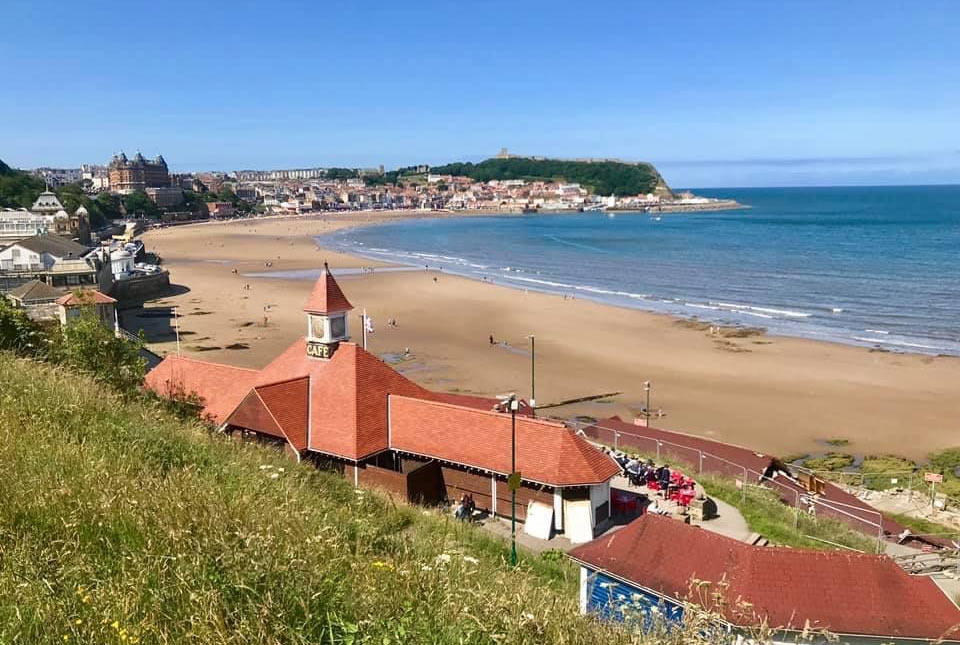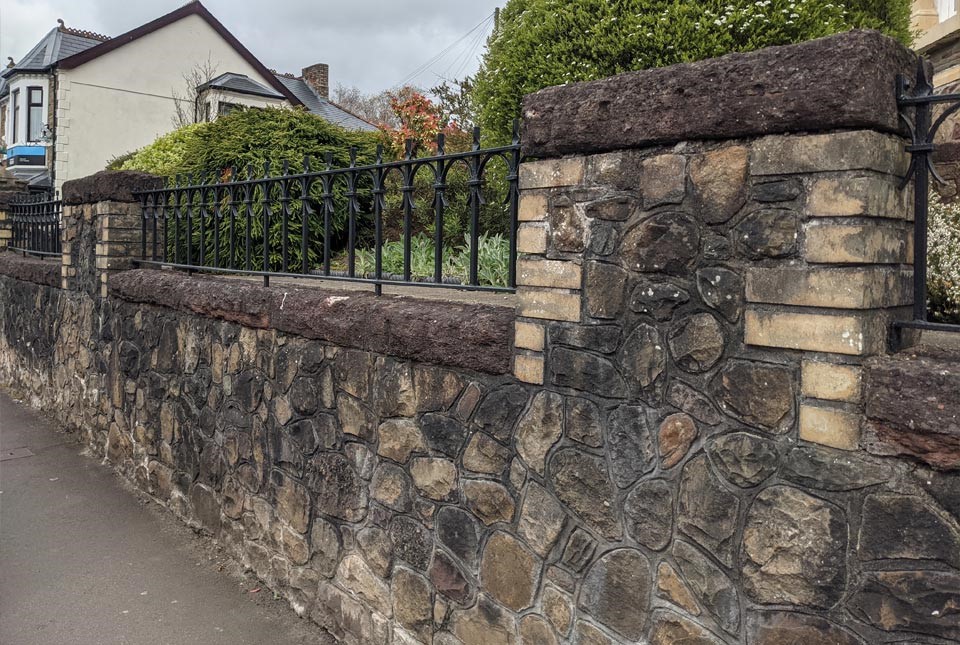The geological ramble outlined for the BGS Wales office in Cardiff included a description of the Gorsedd stone circle, in front of Amgueddfa Cymru – National Museum Wales, erected to celebrate the Eisteddfod held in Cardiff in 1909.
The outer ring of stones is made from ‘Radyr Stone’. Radyr Stone is a ‘freestone’, meaning it can be cut in any direction without breaking, and it is a local speciality produced from a number of quarries in Cardiff. These include sites on the west side of the Taff, north-west of Llandaff Bridge, Plymouth Woods near St Fagans, and at Cadoxton near Barry.
This short walk is to one such quarry at Radyr Woods Community Nature Area and the adjoining Hermit Woods Local Nature Reserve, where Radyr Stone can be examined in situ. This is an area of ancient, semi-natural woodland on the southern edge of the village of Radyr at the northern edge of Cardiff. The quarry is at the south of Hermit Woods.

Radyr Stone quarry. © Rhian Kendall.
Geology
‘Radyr Stone’ is a local name given to the Triassic-aged breccia and conglomerates of the marginal facies of the Mercia Mudstone Group. At the time of its deposition, sedimentation was influenced by the Triassic topography of hills and cliffs, which would have accumulated scree at their bases. The climate was hot and arid but occasional heavy storms produced flash flooding that created wadis and transported mainly Carboniferous-aged sandstone and limestone pebbles and cobbles (‘clasts’). The clasts were deposited in large alluvial fans, which are visible in the bases of the thick beds in the quarry.
The clasts are contained within a red matrix with a calcareous (calcium carbonate) cement. The sediments become finer grained upwards, illustrating the decreasing speed of flow of the storm-influenced rivers. The repeating pattern of decreasing grain size indicates multiple storm events.
Quarry and examples of use
Radyr Stone was quarried from a number of locations across Cardiff from the 1850s to the 1920s. Radyr Quarry’s main period of extraction was from around the 1850s up to until 1908, although it did supply stone for Insole Court in Llandaff during the First World War. The quarry’s position close to the railway line meant that the stone could be easily transported; for example, the stone was taken to build Penarth Dock as well as a number of local bridges along the Taff Vale Railway.
To the south of Hermit Woods is another area of parkland called Hailey Park. Here you can see an example of Radyr Stone used in the five-arched Taff Vale Railway Bridge, which crosses the River Taff. It was designed by Isambard Kingdom Brunel and is now a Cadw Grade II listed structure. The early parts of the bridge were built in locally sourced Radyr Stone, quarried on the west side of the railway just opposite the park.
Radyr Stone is also commonly used as a decorative stone in the buildings of the city and its surrounding area, where it is often seen capping or as courses in walls and buildings:
- the cottages of Junction Terrace, near the entrance to Radyr Woods, are a good example of buildings constructed in part from Radyr Stone
- on the north side of Station Road, close to the Radyr railway station, walls are capped by Radyr Stone
- Ty-Mynydd Lodge, on Heol Isaf and once home to Roald Dahl, has quoins of Radyr Stone
- another example is the lychgate at Llandaff Cathedral, which is also constructed of Radyr Stone
Your challenge (should you choose to accept it) it is to spot Radyr Stone in use elsewhere in the city. My example, close to home, is along the tops of the walls at our chapel in Old St Mellons, in the east of the city of Cardiff.

Carved Radyr Stone used to decorate the top of a pillar at Tyr Winch Road in Old St Mellons, Cardiff. © Rhian Kendall.
Getting to the quarry
The Radyr Quarry can be accessed by walking south through Radyr Woods and via rough paths into the adjacent Hermitage Woods.
There is a railway station very close by at Radyr. The suburb is also well serviced by buses from the city centre. If arriving by car, there is parking at the Radyr railway station and some on-street parking close to the entrance to Radyr Woods.
Safety
If you are going to visit the quarry, please don’t get too close to the faces and take care for dumped rubbish underfoot. The main face is loose and there is a footpath along the top. The quarry faces are in nature reserves so no hammering or collecting.
About the author

Rhian Kendall
BGS Chief Geologist, Wales
Relative topics
You may also be interested in

Discovering Geology
Discovering Geology introduces a range of geoscience topics to school-age students and learners of all ages.

Maps and resources
Download and print free educational resources.

Postcard geology
Find out more about sites of geological interest around the UK, as described by BGS staff.








